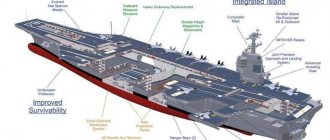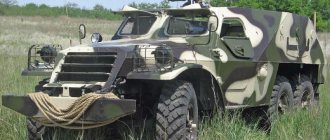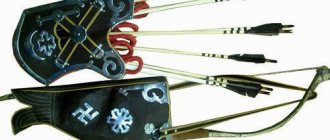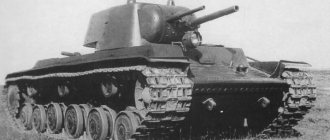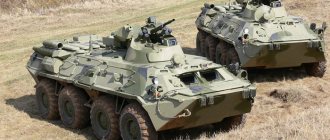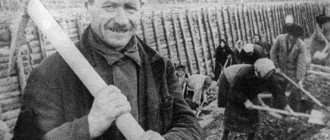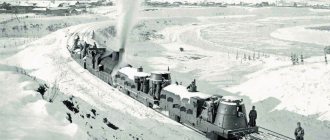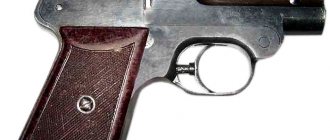For many generations of people born in the era of the USSR, victory in World War II is associated with certain types of military equipment. Il-2 aircraft, the legendary BM-13 Katyusha multiple rocket launchers, the famous T-34 - these and many other combat vehicles became a symbol of the victory of the Soviet people in the bloodiest and largest war in the history of mankind. The history of the Victory of the Soviet Union in the Great Patriotic War gave the T 34 tanks a special and honorable place. Many of them today are frozen on pedestals and pedestals, reminding future generations of their role in achieving victory over an insidious and cruel enemy.
Tank T-34
Monuments to Soviet T-34 tanks can be found in almost any Russian city, across the vast expanses of the country, from the Far East and Kaliningrad. Soviet thirty-fours can be found at monuments and in cities in European countries. Monuments to the Soviet T-34-76 tank are rightfully located in Berlin, the former capital of the defeated Third Reich. It was here that the legendary vehicles took part in the last battles of the Great Patriotic War. The cars can be seen at the memorial to Soviet soldiers in Treptow Park and at the Brandenburg Gate.
T-34 in Berlin
The image of the Soviet tank is the most recognizable in the world. Soviet technology is unmistakably recognizable in America and Japan, Cuba and Africa. The vehicle was tested not only on the battlefields of World War II, but also continued to remain in service for almost 50 years. The last combat use of T-34 tanks, already the latest modification with an 85-mm gun, took place during the events in Yugoslavia in the mid-90s.
Creative search
Although by the mid-30s the USSR had established itself as a “tank power,” I must note that in subsequent years the state of affairs in this area was far from ideal. The army never received a heavy tank with satisfactory performance characteristics; in addition, the Spanish and then the Finnish wars, in which anti-tank artillery was actively used, demonstrated the inadequacy of the armor of the “boxes” available in service.
Since increased armor inevitably had to affect their speed characteristics, this became the reason for installing a more powerful engine on promising vehicles; At the same time, the number of weapons was reduced in favor of installing more powerful tank-piercing guns.
The result of engineering research taking into account this trend was a revolution in tank building, embodied in the creation of “armor” that no one else had.
Tank BT-20
Frame
The T-34's hull was made from rolled armor plates. In the front part of the front plate there is a driver's hatch with a hinged lid. Further, in the upper part of the hatch cover, there is a central viewing device for the driver, and on the left and right there are side viewing devices installed at an angle of sixty degrees to the longitudinal axis of the car. On the right is the embrasure of the forward machine gun in a ball joint. The machine gun does not have an armored mask. The rear inclined sheet of the hull is removable and is attached to the side sheets with bolts. It has a rectangular hatch for access to the transmission compartment. On the side of the hatch there are two oval openings with exhaust pipes, protected by armored caps (Appendix 5).
Tank T-34
I don’t want to chase cheap sensations, but technologically the legend of the domestic tank industry was nothing more than a deep modernization of the BT with the V-2 diesel engine (BT-20), which received more powerful armor and weapons.
Several prototypes were created; Since the purely tracked A-32 demonstrated better cross-country ability and a greater reserve of modernization in comparative tests in the summer of 1939, it was decided to launch it into series after some modifications.
Tank T-34
These modifications consisted of strengthening the frontal armor to 45 mm and replacing the 45 mm gun with a 76 mm one, while I would like to draw your attention to the fact that the “thirty-four”, as a fighter tank, was initially equipped with an L-11 tank-piercing barrel, and subsequently more powerful F-32 and F-34.
The artillery armament was supplemented by a coaxial and frontal machine gun, resulting in the tank's weight being about 26.5 tons. The 500-horsepower diesel engine already mentioned above accelerated the car to 70 km/h on hard surfaces; in addition, being much more economical than any variant of the aviation M-17, it provided a range of 350-400 km.
Thus, it would not be an exaggeration to say that the appearance of the T-34 in the army caused a sensation: the hitherto incredible combination of firepower, armor, speed and range turned many heads in tank helmets.
However, I cannot help but note that the “thirty-four” had a number of “childhood” diseases: for example, the four-speed gearbox was extremely inconvenient and required a lot of physical strength from the driver, so he was often helped by a gunner-radio operator.
T-34 battle illustration
He could afford this, since the poor field of fire of the front-line machine gun often made him “bored” even in battle, as did the radio station, in which the lamps constantly crumbled from the shock of firing.
Thus, in a sense, he was an extra member of the crew, which at the same time was sorely lacking a third number to service the gun: two people, one of whom was the commander and had to coordinate the actions of his crew, or even the entire unit was clearly not enough for this .
In general, the commander's suffering when controlling a tank and a unit is a separate issue, largely due to the fact that, wanting to save on weight, domestic tank builders persistently equipped pre-war vehicles with periscopes instead of commander's turrets, through which it was very clearly visible where the earth ended and the sky began - on More than that, they were not suitable even during the day.
As an illustration, I can cite a fragment from Koshkin’s story “When the Armor Was Burning,” where one of the main characters is forced to periodically lean out of the hatch, fearing that some “stupidly fearless Nazi is lurking next to a grenade.”
Other factors that reduce the combat value of the T-34 include the absence of rubber bands, which some manufacturers skimped on (STZ), and downward-facing exhaust pipes, resulting in a clang and a plume of dust that unmasked tank columns at a distance of several kilometers.
It is also worth mentioning that the development of new technology, especially diesel engines, also caused characteristic problems. However, I want to emphasize that all of the above shortcomings were nothing more than growing pains, and the general trend was best characterized by General Guderian, after inspecting the captured vehicle, who prophetically said that “if the Russians bring the tank to a large series, we will lose the war.” In total, more than 61,000 cars were produced.
KV-3: gaining tank mass
After the KV-1 was adopted, it seemed that the unbridled growth in the combat weight of Soviet tanks had stopped. Instead of the almost 60-ton SMK and T-100, the Red Army received a combat vehicle that turned out to be almost a third lighter, although it had similar weapons and thicker armor. But already in the summer of 1940, work began on creating larger and heavier tanks of the KV family. In January 1941, the T-220 entered testing, surpassing the SMK and T-100 in combat weight. This tank became the harbinger of even heavier vehicles that were to replace the KV-1 in production. We are talking, first of all, about the KV-3
.
Proactively
In 1939, the 95-mm F-28 divisional gun entered testing. This gun, together with the 122-mm F-25 howitzer, was supposed to become part of the divisional “duplex”. Despite the rather large caliber, the gun turned out to be very compact. At the same time, it had decent characteristics, including as a means of fighting tanks. At a distance of a kilometer, the F-28 could penetrate 65 mm thick armor installed at an angle of 30 degrees.
A completely logical solution was to develop a tank gun based on the ballistics of the F-28. The project, which was of an initiative nature, received the factory index F-39. The design bureau team of plant No. 92, under the leadership of V. G. Grabin, took the developments on the 76-mm F-34 cannon as a basis. From time to time information comes up that the F-39 was built and even tested on the T-28 tank. There is even a photograph of a tank with such a weapon. Alas, this is nothing more than the result of misinterpretation of facts and misinformation on the part of Plant No. 92. In fact, the photograph is a retouch, which was used in large quantities in the album of factory No. 92. The F-39 was really designed and was really going to be tested on the T-28. But things never got to the point of building a cannon in metal. By the summer of 1940, interest in 95 mm caliber guns was lost, and the attention of designers switched to the larger 107 mm caliber.
Project of the 95-mm F-39 tank gun, 1940. This gun became the basis for the design of the more powerful 107-mm F-42 tank gun
On June 11, 1940, a curious point appeared in proposals to refine the tank weapons system. Instead of a 152-mm howitzer, it was proposed to arm the KV-2 with a 107-mm cannon based on the M-60 hull gun, developed by the design bureau of plant No. 172 (Molotov, now Perm). Tests have shown that at a distance of 800 meters the M-60 is capable of penetrating armor up to 107–110 mm thick, placed at an angle of 30 degrees. Again, this system appears in the list of tank, self-propelled and anti-tank systems to be developed. Point 4 mentions “a 107 mm tank gun installed in the turret of a KV tank (the swinging part from the new 107 mm M-60 hull gun).” The date for its production was indicated as November 1, 1940, and the contractor was the Kirov Plant.
Until now, it was unknown that the Kirov Plant was working on such systems. Meanwhile, the artillery design bureau of the Kirov plant took the 107-mm cannon with M-60 ballistics into operation, although not immediately - it initially rejected it. In January 1941, the Kirov Plant presented to the Main Artillery Directorate of the Red Army (GAU) a project for a high-power tank gun, indexed “412”. Since 1940, artillery systems have received such 400 indexes at the Kirov plant. For example, the installation of a 152-mm howitzer in a KV-2 with a “lowered” turret had the index “402”.
The “412” system was offered in two versions. "412-1v" was a tank version of the 100 mm B-24 naval gun. The GAU immediately abandoned this system, since it only took a pipe, a projectile and a cartridge case from the B-24. Moreover, an armor-piercing projectile for the B-24 did not exist in nature, and the GAU quite rightly believed that the nomenclature of tank artillery should correspond to field artillery. So the first advent of a 100 mm tank gun ended in a complete fiasco.
As for the second system, which had the index “412-2v”, it had a caliber of 107 mm. The Kirov Plant was offered to develop it at its own expense, because in 1940 they refused this work, as mentioned above. Over the past time, another plant took the initiative, which in January 1941 had already manufactured its own cannon. This is where the story of the 107-mm cannon developed by the Kirov plant ended.
107 mm ZIS-6 tank gun
The fact that Plant No. 92 was proactively developing a 107 mm tank gun became known in December 1940. Until that moment, the GAU KA had not received any information about the system, which received the F-42 index. When creating the new gun, the design bureau team at Plant No. 92 made maximum use of the experience of creating the F-39 and F-34. As prescribed in the requirements of the GAU KA, the gun was created using the barrel of a 107-mm divisional gun model 1940 (under this designation the M-60 was adopted for service).
It was expected that the prototype F-42 would be ready by December 25, 1940, but work was delayed. The new gun was supposed to be used on the basis of a prototype of the T-220 heavy tank, but this idea had to be abandoned. The T-220 turret turned out to be too small for the F-42. On February 19, 1941, a letter signed by Marshal Kulik was sent to plant No. 92 with instructions to install a prototype of a new gun on the KV-2 tank by May 1, 1941. The tank was shipped to the plant even earlier - on January 29. At the same time, they still decided to try to install the F-42 on the second sample of the T-220, for which its turret was to be sent to plant No. 92.
New perspective
On March 15, 1941, the Council of People's Commissars of the USSR and the Central Committee of the All-Union Communist Party of Bolsheviks issued a resolution No. 548–232, according to which the Kirov Plant began preparations for the production of a modified T-150 heavy tank. In the series, the modified tank, which bore the factory designation “Object 222,” was supposed to bear the designation KV-3. In general, it was the same KV-1, but with an F-34 cannon, a slightly modified turret with a commander's cupola, a more powerful V-5 engine and armor increased to 90 mm.
Meeting in Smolny on the deployment of KV-3 production. No one yet knows that after a couple of weeks a completely different machine will be developed under this index.
This activity, however, did not last long. Already at the end of March, foreign intelligence reported the appearance of heavy tanks in Germany. What exactly the scouts had in mind is not entirely clear. Nevertheless, the information received was taken extremely seriously. The development of more powerful anti-tank guns began, and work began on strengthening the armor and shielding of existing tanks for tanks of the KV and T-34 families. Of course, work on promising tanks has also undergone major changes. Already in the second decade of April 1941, work began on a new vehicle, heavier than the T-150 and even the T-220.
On April 7, 1941, Resolution No. 827–345ss of the Council of People's Commissars of the USSR and the Central Committee of the All-Union Communist Party of Bolsheviks was issued, which established the technical characteristics of the new tank, which also received the KV-3 index. L. E. Sychev was first appointed senior engineer of the machine, who was later replaced by B. P. Pavlov. The tank received the design code 223, sometimes it was also called “Object 223”. Its combat weight was estimated at 67–68 tons, the thickness of the turret armor was 115 mm, the front of the hull was 155–120 mm, and the sides were 90 mm. The weapon specified was a 107 mm cannon, as well as three DT machine guns. It was planned to install an 850-horsepower V-2CH as a power plant. Before the development of the new engine in production, it was allowed to install, with subsequent replacement by the V-2CH, a 700-horsepower V-5.
Full-size mockup of the KV-3, May 1941
The Kirov Plant was freed from the production of spare parts for the KV-1: this task was transferred to ChTZ. The task of producing the “former” KV-3 based on the T-150, which received the designation KV-6, was also gradually supposed to move there. It is worth noting that the Main Armored Directorate (GABTU) was against such a decision, proposing instead of the 223rd to make the T-150 with a 76-mm cannon, which has the ballistics of a 3-K anti-aircraft gun, as well as with reinforced armor for the frontal part of the hull up to 120 mm and towers.
The new tank was not created from scratch. The KV-3 was a T-150 with an elongated hull, like the T-220, on which it was supposed to install a turret, also modeled after the T-220 turret, with an 85-mm F-30 cannon. From the very beginning it was stipulated that the tower would be manufactured by stamping. Even the construction of the hull for the KV-3 prototype was not carried out from scratch. The fact is that on February 10, 1941, the Kirov Plant received a set of hull parts for the experimental T-221 tank (Object 221). It was a T-150 with an elongated hull, on which it was planned to install a KV-1-type turret with a 76-mm cannon. The tank was supposed to be assembled on December 1, 1940, but the Izhora plant delayed the shipment of parts for a number of reasons, and the Kirov plant had no time for it either.
KV-3 model, side view. It is clearly visible that the hull of the new tank followed the configuration of the T-220
In the previously mentioned letter from Marshal Kulik, it was proposed to install a 76-mm F-27 cannon with the ballistics of a 3-K anti-aircraft gun in the T-221 turret. We were talking about the second sample of the system, assembled back in the fall of 1940 - by the spring of 1941 it became known as ZIS-5. These plans were not destined to come true, since no one touched the T-221 either in February or March 1941. The same thing happened with the SAU 212A hull. And in April it was finally decided to use the T-221 hull as the basis for the manufacture of the KV-3 hull. The task was made easier by the fact that the sides of the T-221 and KV-3 had the same thickness. Only the front sheet needed to be strengthened.
The Kirov Plant began design work on the new tank immediately after receiving an assignment from the NKTM (People's Commissariat of Heavy Engineering). In parallel with the design work, tests were carried out on the T-220, equipped with the V-5 engine. It was this engine that was supposed to be installed in the KV-3 before the development of production of the V-2SN. The vehicle, loaded to 70 tons, with torsion bars sagging by 2-3 cm from such a load, traveled 150 kilometers in the period from April 12 to April 15. Of course, the difference of 150 horsepower was felt, but in general the tank could drive with such a mass, so the B-5 was suitable as a temporary measure.
In the rear-left view, it is noticeable that the tower has a rather complex shape. With all the roundness at the base, in plan it was still closer to a rectangle
For the new tank, designer N. F. Shashmurin developed a gearbox, which was a development of the gearbox for the T-220. It should be noted that in parallel with it, the Military Academy of Mechanization and Motorization (VAMM) was entrusted with the development of an electric transmission. A transmission of this type, under the leadership of Professor N.I. Gruzdev, was previously developed at VAMM on its own initiative. The corresponding tactical and technical requirements were approved on April 29, 1941. At the same time, the requirements for the hydraulic transmission were approved. Its design was carried out by employees of the All-Union Institute of Hydraulic Mechanical Engineering.
By April 26, a full-size mock-up of the KV-3 was prepared and passed a preliminary inspection. As a result, they decided to remove the DT aft machine gun, replacing it with a port for firing from PPSh. It was also recommended to install a projectile rammer for the ZIS-6 cannon (as the F-42 became known), a device in the stern for mounting the cannon in a traveling manner, and slightly change the design of the turret. Adjustments were also made by the railway workers, who demanded that the width of the tank be reduced to 3410 mm. It was proposed to make the shot for the ZIS-6 unitary, and increase the ammunition load to 60 shots.
Longitudinal section of KV-3. It can be seen that a flamethrower is installed instead of a machine gun
The commission examined the modified KV-3 mock-up for the second time on May 7, 1941. Along with the layout, the commission got acquainted with a large amount of technical documentation. In addition to the improvements, one important innovation appeared in the design of the tank. Instead of a machine gun, it could now be equipped with a flamethrower designed by factory No. 174. In general, the tank was approved, although a list of several dozen points for improvement was compiled.
It should be noted that by that time the KV-3 had already begun to be viewed as a temporary phenomenon. The thickness of the armor chosen for it was based on the results of shelling of armor plates by the German 88-mm Flak 18 anti-aircraft gun. As for the future, even armor of 120 mm was now considered insufficient.
Top view of the KV-3 hull
Based on the results of firing the armor plates with a 105-mm Flak 39 anti-aircraft gun purchased in Germany, it turned out that to protect against this weapon, armor with a thickness of about 130 mm is required. Since April 1941, the design of an even heavier KV-4, and then the KV-5, began. At the same time, everyone understood perfectly well that work on the KV-4 and KV-5 would continue for a long time. Therefore, for 1941, the KV-3 clearly remained a priority.
According to the additional agreement to Treaty No. B1-081, signed on June 5, 1941, the Kirov Plant undertook to produce no less than 500 KV-3 in 1941. The first 55 tanks were planned to be received in August 1941, 105 in September, 110 in October and November, and 120 in December. The price for one tank was 740 thousand rubles. For comparison, the KV-1 cost 523 thousand, and the KV-2 - 558 thousand rubles. German Pz.Kpfw. Tiger Ausf.E cost 400 thousand Reichsmarks (at the 1940 exchange rate this is 840 thousand rubles), and Pz.Kpfw. Tiger II - 321,500 Reichsmarks (675,150 rubles).
Gearbox developed for the new tank. Later, its design would be used by Shashmurin to create a gearbox for the KV-1s
However, the KV-3 series still had to be reached. A separate problem was the tower, which, as mentioned above, was supposed to be of a stamped design. As of May 13, 1941, the equipment for its manufacture was only partially ready; in fact, it was possible to begin stamping prototypes only in mid-June. Work on the manufacture of the body was also delayed: it also began only in June. The second sample of the ZIS-6 gun arrived at the Kirov plant in May, but field tests of this system began only at the end of June 1941. In this form, the KV-3 met the beginning of the Great Patriotic War.
In evacuation
The outbreak of war very quickly changed the course of work on promising projects. On June 26, 1941, order No. 253ss was issued by the People's Commissariat of Heavy Engineering, according to which the task of developing a new heavy tank was transferred to ChTZ. The same order was duplicated on June 30, 1941 at the Kirov Plant. At the same time, the order stopped work on the KV-4 and KV-5, although in practice the design of the KV-5 continued until the evacuation of the Kirov plant. According to the plant order, 18 design engineers were transferred to Chelyabinsk, including Dukhov, Pavlov and Shashmurin. As for the prototype, it was decided to assemble the hull, equipping it with a serial chassis and an engine from the T-220. Along with the chassis, stamped turret blanks, as well as all the equipment involved in manufacturing, were sent to Chelyabinsk.
Installation of a 107-mm ZIS-6 cannon in a KV-3 turret, top view
At the beginning of July 1941, the half-assembled KV-3 and its turret were loaded onto two platforms and sent to Chelyabinsk. It is believed that this is where the history of this tank actually ended, since mass production was never established. Moreover, even the assembly of the prototype was not completed.
In fact, this is not the case, as archival documents eloquently demonstrate. As already mentioned, field tests of the ZIS-6 began only in June, namely on the 25th - after the start of the war. During the tests, which took place until July 5, 618 shots were fired. On the one hand, tests showed good armor penetration, amounting to 120 mm at a distance of 1600 meters. On the other hand, claims were made against the system due to the insufficient strength of a number of components. After eliminating these shortcomings, serial production of the ZIS-6 was given the green light.
Installation of ZIS-6 in the KV-3 turret, cross section
The design bureau of plant No. 92 did not stop there. A redesigned version of the gun was developed on its own initiative, designated ZIS-6A. Some authors mistakenly considered this installation to be a development for the KV-7 assault tank, which is not true. What the ZIS-6A system actually was can be clearly seen from the letter that ChTZ chief engineer S.N. Makhonin received on September 8, 1941:
“We have developed and are in production of a twin installation of a 45 mm cannon with a 107 mm ZIS-6 cannon; at the same time, the coaxial “DT” machine gun remained in the same place.
The tactical purpose of this installation is obvious: do not waste 107 mm shells on targets that can be successfully hit by 45 mm shells.
Due to the absence of the KV-3 tank at the plant, we carry out this installation for testing the prototype in the turret of the KV-2 tank.
We know from your designer, Comrade Shneidman, that you are making a new turret for the KV-3 tank. In view of the obvious advantage of having an additional 45 mm cannon in the KV-3 tank and the minor changes in the turret caused by this installation, when manufacturing a new turret, we ask you to expand the embrasure, change the frame and armor according to the attached drawings of the twin installation. Since we do not have drawings of the new KV-3 turret, we operate with old ones, which does not matter for a fundamental solution to the issue.
At the same time, we ask you to develop an option for storing 107 and 45 mm cartridges in the KV-3 turret, for which we will send you an approximate dimensional drawing of a 45 mm gun cartridge.”
In a certain sense, Grabin made an attempt to turn the KV-3 into an analogue of the KV-4, where the installation of two guns (45 and 107 mm caliber) was provided for in Dukhov’s approved technical design. At the same time, it follows from the letter that a new turret was designed for the KV-3 in Chelyabinsk, since there was no place to stamp it there. Alas, by September 1941, ChTZ was no longer up to the KV-3: after the evacuation of the Kirov plant to Chelyabinsk, ChTZ became the only manufacturer of the KV-1.
Modified gun mantlet
Despite this, it was still too early to talk about the death of the KV-3. Firstly, this tank was used as a base for the 212A bunker fighter, which no one has yet abandoned. Secondly, the KV-3 continued to appear in the experimental work documents of ChTZ (from the end of 1941, ChKZ, that is, the Chelyabinsk Kirov Plant). In the plan for 1942, approved on December 22, 1941, the KV-3 appears under the first number. It is called “work carried over from 1941,” which at a minimum should have been completed by assembling a prototype. The completion date for the work was May 1, 1942. By July 1942, work on the electric transmission for the KV-3 was expected to be completed, and by December 1942, the production of a two-stroke diesel engine based on the V-2 was expected to be completed. The engine was supposed to have a power of 1200 horsepower.
Unnecessary heavyweight
The gravedigger of the KV-3 was its older brother, the KV-1, or rather, the low reliability of the transmission of this tank. Due to the constant increase in the thickness of the armor and with it the increase in mass, the KV-1 began to suffer from constant breakdowns. The gearbox especially suffered. In the spring of 1942, work began to reduce the weight of the tank, and this happened on instructions from above. In such conditions, the almost 70-ton KV-3 was definitely out of work.
One can only regret that the KV-3 was never assembled and tested. And not because these almost 70-ton tanks, which were superior to their foreign counterparts in all main characteristics, could change something during the war. Although, due to its significantly more powerful armor, the KV-3 would have turned out to be a truly tough nut to crack for the Germans, the matter is completely different. The construction and testing of even one such tank could sober up the Soviet military, once and for all discouraging the desire to build anything similar.
How the tests would have ended can be easily seen from the torment that the designers and testers of the lighter T-220 experienced. Where earlier it would have been understood that there was nothing to pull out such a monster and it would be problematic to transport it by rail. In the end, not every bridge could withstand such a colossus. If our tank industry and military bigwigs had filled up in 1941, suffering with the KV-3, we wouldn’t have even thought about any IS-7 or IS-4. The understanding that a heavy tank should not be “fed” to a mass of more than 50 tons could have appeared already in the early 40s, and not in 1949, after 4 years of suffering with the IS-4 and IS-7. Unfortunately, history does not operate with subjunctive moods.
The author thanks Kirill Koksharov (Chelyabinsk) for his assistance in preparing this material.
Literature and sources:
- TsAMO RF
- RGVA
- Author's archive
- Archive of Gennady Malyshev
- Domestic armored vehicles. XX century Volume 1. 1905 – 1941, A. Solyankin, M. Pavlov, I. Pavlov, I. Zheltov, Eksprint, 2002
Tank KV-1
I should note that, despite the launch of the T-35 series, engineering research continued in parallel with its production, which should lead to the creation of a more advanced heavy tank. In the second half of the 30s, when the role of heavy armor became obvious, the Kirov Plant design bureau developed three promising options: the multi-turret T-100 and SMK, as well as the single-turret KV, field tests of which began in the summer of 1939.
With the beginning of the Finnish War, it was decided to subject all three prototypes to front-line tests, which demonstrated the powerlessness of enemy anti-tank artillery against their armor, which on the HF was represented by armor plates 60-75 mm thick.
|
|
However, front-line tests, in addition to the advantages, also revealed the disadvantages of the new vehicles, so in addition to the problems caused by the dimensions and weight of heavy tanks, the effectiveness of the L-11 guns when working on fortifications of the Mannerheim Line left much to be desired.
As a result, the “forty-five” T-100 and SMT were considered a design excess, the “anti-tank” version of the KV was planned to be equipped with a more powerful gun, and the KV-2 version equipped with a 152-mm “beater” was developed directly for Finnish pillboxes.
|
|
As you probably know, the KV-1 and KV-2 went into production - these vehicles, which staged more than one enchanting massacre in the first two years of the Second World War, earned a reputation as the most powerful tanks of its beginning. Only the appearance of more powerful tank-piercing guns on enemy “rollers” caused the cessation of their production - a total of 3,225 and 240 units were produced, respectively.
Guns
The tank was initially equipped with a 76.2 mm L-11 model gun with a 30.5-caliber barrel. It had a number of shortcomings, so it was soon replaced by the more successful F-32 cannon. After some time, the design bureau developed a modification of this weapon, which was seriously superior to the previous version. The gun was named F-34, the length of its barrel increased to 41 caliber, which significantly increased the penetrating power of the gun. There was a DT 7.62 mm machine gun coaxial with the cannon, and a telescopic sight was used for direct fire of the gun.
Tank building on the eve of war
So, at the beginning of WWII, there was a qualitative breakthrough in domestic tank building, which determined the superiority of Soviet tanks over foreign analogues. However, the lack of time to master new technology was one of the reasons that, despite some successes, Soviet vehicles could not always effectively resist the enemy on the battlefield.
Tank plant in Chelyabinsk
However, already in 1942, when the troops acquired the minimum necessary experience, and factories, often deployed in open fields, began to drive new military equipment to the front in ever-increasing quantities, the picture began to change. This was also greatly facilitated by the creation of more advanced “boxes”, which I will talk about in the next article.
A difficult start to a glorious journey
The history of the Soviet T-34 tank is pages written with blood and sweat. Despite the fact that today, in most cases, the idea of a legendary tank is formed on the basis of the T-34-85 vehicle with a long and powerful gun, the vehicle of the very first modification bore the brunt of the battles of the Second World War. It was with this machine that the Red Army entered the Great Patriotic War. Until 1944, the main tank of the Red Army was the T-34-76. Soviet tank crews fought on these tanks in 1941 near Moscow and took part in the bloody battles near Stalingrad in the summer and winter of 1942. The first modification of the “thirty-four” suffered a lot of tests during the battle on the Kursk Bulge in 1943.
Soviet T-34s became the most popular tanks in the entire history of the war. From 1940 to 1947, the car in various modifications was produced in the USSR by 7 factories at once. Later, after the end of World War II, Soviet T-34-85 tanks began to be assembled at factories in Czechoslovakia and Poland. Before the war, the new car was mainly produced by the Stalingrad Tractor Plant, Kharkov Plant No. 75 and the Kirov Plant in Leningrad. Subsequently, with the beginning of the Great Patriotic War, Gorky, Omsk plant No. 174, a tank plant in Nizhny Tagil and plant No. 183 in Chelyabinsk joined the production of “thirty-fours”.
During the first period of the war, from the summer of 1941 to the summer of 1942, the Soviet tank industry experienced the most difficult period associated with the large-scale evacuation of enterprises to the East. New tank factories in Nizhny Tagil, Omsk and Gorky were just gaining the necessary capacity. Old Soviet tank factories in the European part of the country continued to operate in difficult front-line conditions. The Kirov plant in Leningrad continued to produce KV and T-34 tanks during the blockade. The Kharkov plant was lost as a result of the rapid German offensive in the spring of 1942. The Stalingrad Tractor Plant produced T-34 tanks so necessary for the front until the very last moment, when street battles were already taking place in the city.
Despite the difficult conditions at the front and the loss of main production facilities, Soviet troops continued to receive medium tanks.
In general, we can say that 1941 became a landmark year for the T-34 tank. The role of the “thirty-four” in the most difficult and difficult period for the Red Army can hardly be overestimated, even if in the first months of fighting at the front, up to 80% of the new vehicles available to the troops as of June 22, 1941 were lost.
Tank losses
The difficult situation with equipping Soviet troops with modern and combat-ready armored vehicles, which developed in the second half of 1941, inevitably affected the strength of the Red Army's defense. The enemy increased the strength of its attacks, using tank strike formations in the main directions. The Soviet troops could not oppose anything to this onslaught, due to the lack of the necessary number of modern and powerful tanks in the troops.
The Soviet tank industry did not have time to make up for the losses of armored vehicles in the troops; the defense industry in the east of the country was only gaining its capacity. In the battles near Moscow, the Soviet command used mainly old, obsolete light tanks BT-7 and T-26. The situation was slightly eased by the appearance of light tanks T-50 and T-60 at the front in small numbers. The share of modern Soviet tanks of the Second World War T-34 and KV in the troops after the devastating first months of 1941 was insignificant.
Assembly shop
Only a year later, during the counteroffensive of Soviet troops near Stalingrad, the situation began to change for the better. The Soviet shock tank corps were equipped with the new “thirty-fours” in sufficient quantities. Beginning in the spring of 1942, Soviet tank crews began to receive brand new T 34s coming off the assembly lines of Ural factories. Already by the beginning of 1943, the Soviet tank industry in terms of tank production surpassed the results of the work of tank factories in Germany and occupied Europe. Soviet factories produced 15,889 T 34 tanks alone in 1943. Since 1944, production of a more advanced vehicle began, in which the turret was replaced and the main weapon was the 85-mm ZIS-S-53 cannon.

